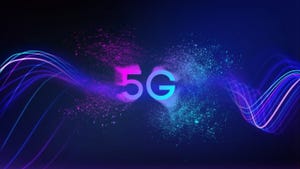ITU shares framework for 6G standardsITU shares framework for 6G standards
The ITU has published its framework for the development of standards and radio interface technologies that will make up the sixth generation of mobile technology.
December 5, 2023

Don't get too excited though. While the UN's telecoms body claims the move represents "significant progress" in the creation of global standards for 6G, we're still not a lot closer to knowing exactly what the next generation will bring, or what it will look like.
Nonetheless, it is a step forward – the ITU is officially shooting for a final set of 6G technology standards by the end of the decade – and there is some interesting information in the framework.
Those so inclined can download the full framework here. Essentially, the document, which was approved by the ITU Radiocommunication Assembly (RA-23) at its recent meeting in Dubai, outlines some key technological areas, such as possible spectrum bands, as well as highlighting potential 6G capabilities and use cases.
On the spectrum front, the ITU said it expects IMT-2030 – its reference for 6G – to require multiple frequency ranges to meet capacity and coverage requirements, from sub-1 GHz up to bands above 100 GHz. It is currently developing a report on the technical feasibility of IMT mobile technologies in bands above 92 GHz. This is largely because it foresees new use cases and applications with high data rates and low latency that will need large contiguous bandwidths of tens of GHz, hence the need to look to higher frequency ranges that will complement the lower bands.
The ITU shared 15 capabilities of 6G in areas such as data rate, efficiency, latency and so forth, nine of which are essentially an upgrade from 5G. The ITU is talking about peak data rates of 50 Gbps, 100 Gbps and 200 Gbps, depending on the scenario, and shares examples of user experienced data rates of 300 Mbps of 500 Mbps. It is clear that in both cases the rates will be greater than those associated with 5G. Similarly, its examples of total traffic throughput come in at 30 Mbps and 50 Mbps per square metre, while latency could reach 0.1–1 milliseconds. Spectrum efficiency could be 1.5 to three times greater than with 5G (see chart).
When it comes to use cases, there's not a lot in the document that we haven't heard before. Immersive communication, including immersive XR, remote multi-sensory telepresence, and holographic communications, is on the ITU's list, alongside the oft-mentioned low-latency applications in telemedicine, machine interactions, and so forth.
We also have AI, including the use of digital twins, and integrating sensing and communications. And finally ubiquitous connectivity, something industry watchers have long cited as fundamental to 6G.
Ubiquitous connectivity will almost certainly require mobile networks to interwork with other types of communication system, and that is tackled to an extent in the ITU framework too. IMT-2030 will see cellular technology working with non-terrestrial networks, including various satellite systems, and other terrestrial networks like RLAN and broadcast.
All in all, the ITU framework essentially collates a lot of what was already becoming standard thinking around 6G. And to that extent it's a positive development. But it doesn't go any further than that. There is clearly still masses of work to be done.
But 2030 is still the target date for 6G. The ITU aims to collect proposals for the IMT-2030 Radio Interface Technology (RIT) from companies and industry associations by early 2027 to enable it to get a final set of 6G technology standards approved by 2030. It expects to complete the initial standardisation that same year, to support 6G deployments by ITU members also from 2030 onwards.
As with all generations of mobile technology, we will doubtless see plenty of pre-standard 6G later this decade though.
"By agreeing on a way forward on 6G, ITU Member States have taken an important step toward ensuring that technical progress is synonymous with affordability, security, and resilience – supporting sustainable development and digital transformation everywhere," said ITU Secretary-General Doreen Bogdan-Martin.
Singing from the same hymn sheet is certainly a start.
About the Author
You May Also Like










.png?width=300&auto=webp&quality=80&disable=upscale)


_1.jpg?width=300&auto=webp&quality=80&disable=upscale)